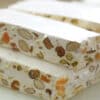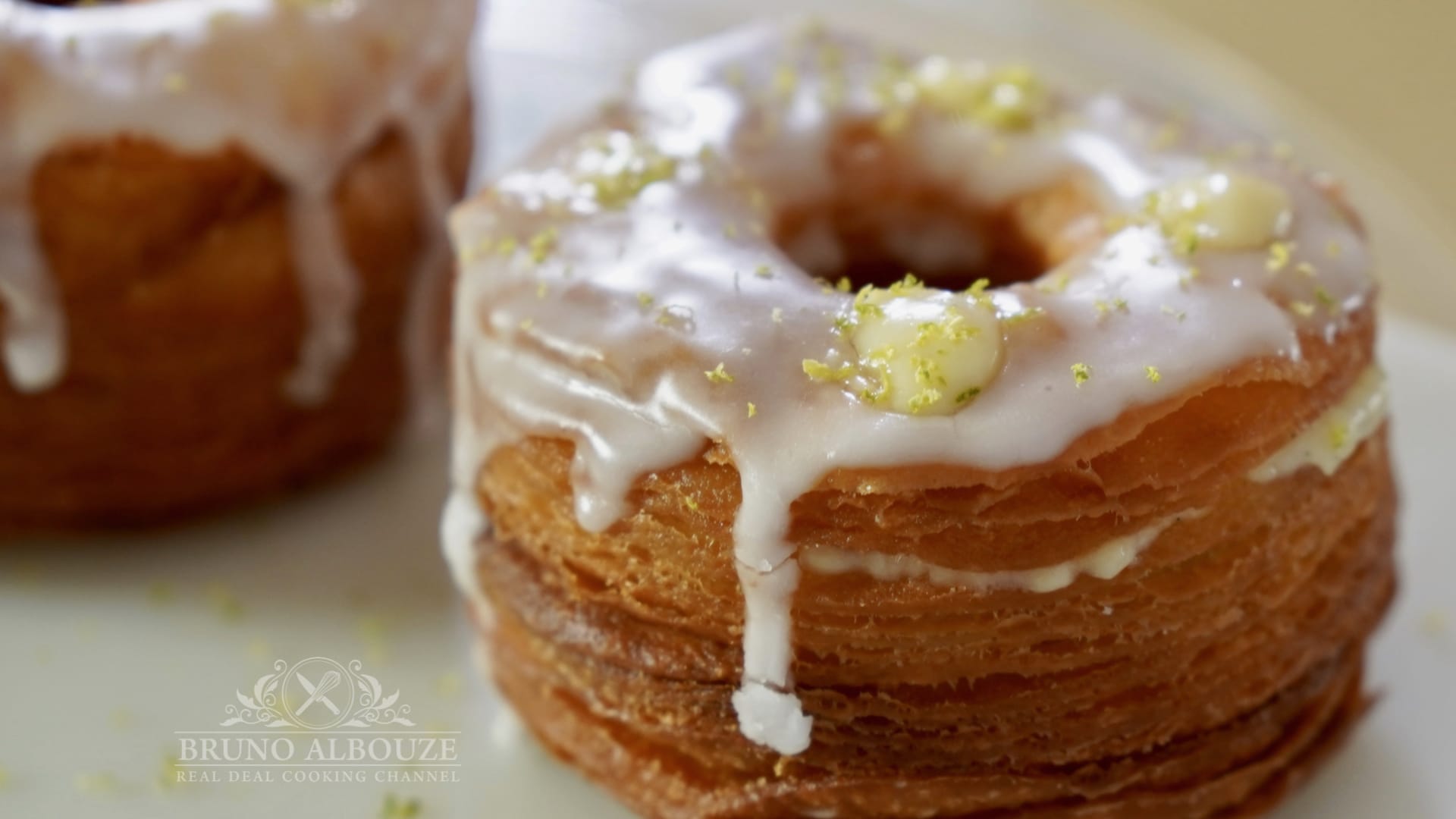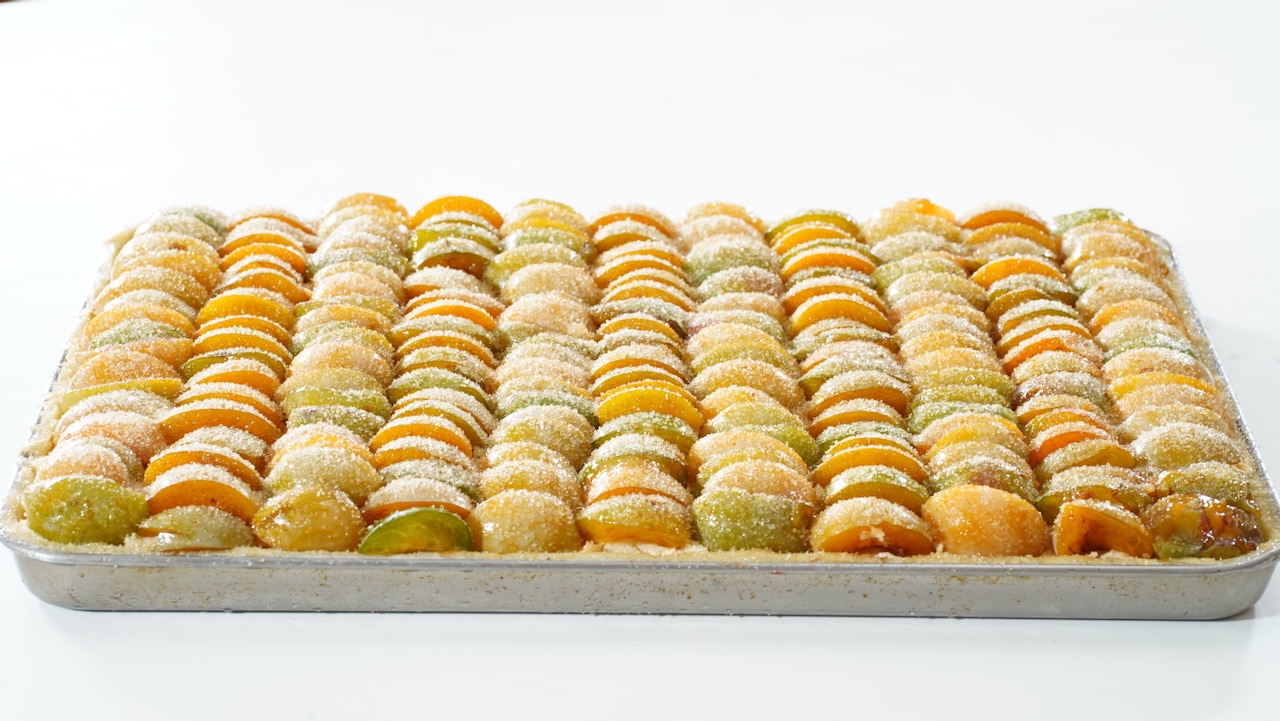Nougat de Montélimar
White nougat is more than a candy; it is a bite of edible history. Imagine a confection so timeless that its very name whispers of ancient kitchens—derived from the Latin nux gatum, meaning “nut cake.” This delicate yet decadent sweet traveled from the Byzantine Empire along Roman routes, carrying with it the art of blending simplicity with luxury. At its heart, white nougat is an alchemy of air and amber. Stiffly beaten egg whites are gently married to a simmering syrup of honey and sugar, transforming into a pearlescent base that is both cloud-like and substantial. Into this mixture, a generous scattering of roasted almonds or pistachios is folded, each nut providing a satisfying crunch against the sweet, chewy backdrop. Known as torrone in Italy and turrón in Spain, this treat holds a cherished place in festive traditions, especially during Christmas. Its texture tells a story of craftsmanship—cooked to a precise temperature to achieve anything from a tender, yielding chew to a firm, tooth-resisting snap. Whether enjoyed in the sun-drenched plazas of Alicante or wrapped in wax paper from a French pâtisserie, white nougat remains a testament to the enduring pleasure of honey, nuts, and expertly whipped egg whites—a triumvirate of ingredients that have, for centuries, turned simple sweets into small miracles.
Please note that the full access to this content needs a subscription: please sign up.
A Christmas celebration
This recipe is a protected and only available for paid members. To obtain the full step by step recipe and detailed ingredients list, please sign up.
Preview the recipe
Origins and Types of Nougat Explained
- Many legends exist about nougat’s origins. The word “nougat” derives from the Latin “nux gatum,” meaning “nut cake” (gâteau aux noix). It spread to Western Europe from the Byzantine Empire during the era of the Roman Empire.There are three basic kinds of nougat. The first and most popular is white nougat—called mandorlato or torrone in Italy and turrón in Spain. It is made from beaten egg whites and a cooked syrup of honey and sugar. White nougat appeared in Italy in the early 15th century, in Alicante, Spain in the 16th century, and later in Marseille and Montélimar, France, in the 18th century.The texture of nougat can range from soft to hard; the higher the temperature of the cooked sugar syrup, the harder the resulting nougat. Nougat can also be finished in the oven to achieve a toasted color and a firmer texture. The recipe below yields a medium-firm consistency.Nougat de Montélimar must contain at least 30% dried fruits, such as almonds and pistachios. (Note that nougat paste is different and requires only 15%.) The quality of nougat depends significantly on the percentage and quality of both dried fruits and honey. Candied orange peel elevates nougat to another level (as in nougat de Montélimar à l’orange). Other dried fruits—such as apricots, cherries, or raisins—can be added, along with flavors like lemon, anise, vanilla, ginger, or chocolate. Nougat is an important component of Christmas celebrations in many cultures.
Tip For Cooking Sugar
- If the sugar syrup reaches the target temperature too quickly, reduce the heat. You can lower the temperature by adding a couple of teaspoons of cool water. Then, continue heating the syrup and maintain control until it returns to the correct temperature.
Meringue For The Nougat
- Toast nuts in the oven for 10 minutes; keep them warm. Before you begin, prepare a baking tray or mold. Lightly oil the sides and line the bottom with either a sheet of wafer paper (glossy side down), some of the sifted sugar-starch mixture, or a thin layer of finely crushed nuts.Important: Do not let plastic wrap come into direct contact with the hot nougat, as it will stick and be difficult to remove.Have the sugar syrup and honey syrup components measured and ready in two separate saucepans. Start by cooking the sugar syrup first. Meanwhile, begin beating the room-temperature egg whites with the cream of tartar on medium-low speed, keeping them at a foamy stage.When the sugar syrup reaches 220°F/120°C (this should take about 15 minutes), reduce its heat to low. Immediately begin cooking the honey syrup on high heat.Once the honey reaches 266°F/130°C, the meringue should still be foamy or just reaching soft peaks. Increase the mixer speed to high and, with the mixer running, slowly pour the hot honey in a thin stream against the side of the bowl. Continue beating on high.At this point, the sugar syrup should have reached 293°F/145°C (the firm-ball stage). Reduce the mixer speed to medium and carefully pour the sugar syrup into the meringue. This stage incorporates air and creates the nougat's fluffy, chewy texture. Continue beating for 5 more minutes on medium-high speed.Turn the mixer off and swap the whisk attachment for the paddle. Add the hot cocoa butter, turn the mixer back on, and mix for about one minute to incorporate. Add the warm nuts and mix just until combined—a few seconds—being careful not to overmix. Lightly oil your utensils and fingertips. Working quickly, transfer the very sticky and warm-hot nougat mixture into the prepared pan; it becomes increasingly difficult to handle as it cools.Shape it into a rectangle and top with another sheet of wafer paper (glossy side up). Use a rolling pin to smooth and compress the surface. Let the nougat cool at room temperature for several hours. It can also be chilled to set. If chilled, allow the nougat to sit at room temperature for about 30 minutes to soften slightly before cutting. It should be quite firm but not rock-hard.
Nougat Assembly
- To unmold the nougat, first run an oiled spatula carefully around all the edges. Then, gently flip the entire slab onto a clean work surface. Use a sharp serrated knife to trim the uneven edges. Next, divide the slab in half lengthwise, and cut each half into individual bars. To prevent sticking, dust the knife with the reserved sugar-starch mixture between cuts.
Storage
- Nougat can be individually wrapped in cellophane, or wax paper. It can also be enrobed in temperated chocolate.Like most confections, nougat stores best for several months in a cool, dry place at an ideal temperature of 57–61°F (14–16°C). For home storage, especially in warm climates or during summer, the refrigerator is a suitable alternative to protect it from heat and humidity. If refrigerated, allow the nougat to rest at room temperature for about 30 minutes, or until it softens slightly, before serving.
Cleaning Utensils
- To clean the utensils used for making nougat, soak the mixing bowl and other equipment in hot, soapy water. Once the mixture has softened and cooled, wash and rinse the items thoroughly. Alternatively, they can be cleaned in a dishwasher; however, the knife should always be washed by hand.
Ready to discover this recipe? You're only 1 step away.
This recipe is only accessible to registered members!
Create your account to access all recipes and content of my website.
Join us now and enjoy more 800 recipes (Mostly French with European Influences, American Classics and Asian fusion)
Already register? Sign in
Want to see more tasty recipes?
The kitchen is an incredible playground where every ingredient, every recipe, every flavor, is both a destination and a path to new discoveries. I always try to introduce you to new taste horizons through my recipes. Did you enjoy this one? If so:Do you know my incredible Walnut Coffee Nougat recipe?You might also like these contents...
Enjoy these free access recipes
Free Recipes
Chestnut Paste
Breakfast
Cronut
Entrees
How To Cut Potato Gratin
Cooking techniques
Deboning A Turkey Leg
Entrees
Rustic Ratatouille
Daily summer Recipe
Plum Slab Pie
Free Recipes
Chocolate Sauce
Free Recipes
Apricot Sablé Breton
Desserts
Sundae Ice Cream
Free Recipes
How To Decorate Ice Cream Cones
Free Recipes
Tapenade
Amuse Bouche




















